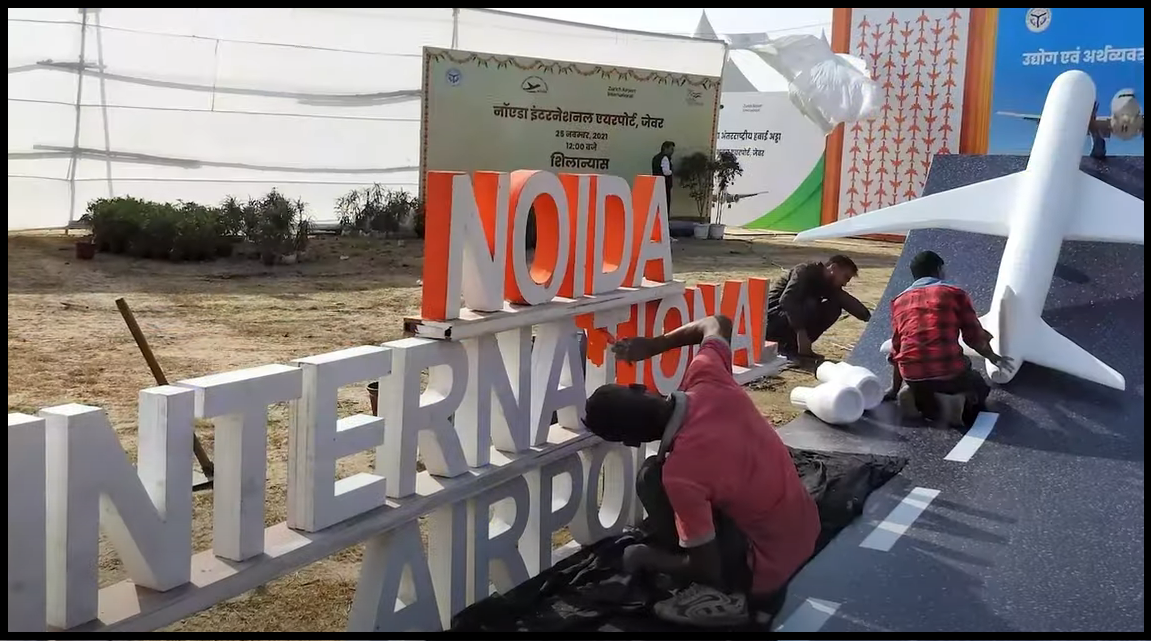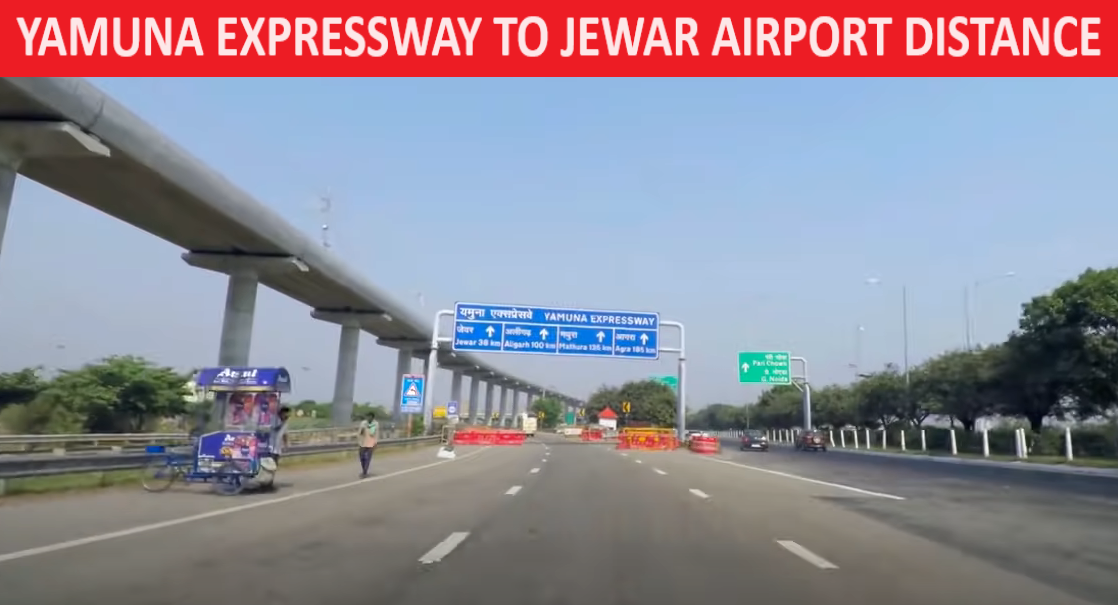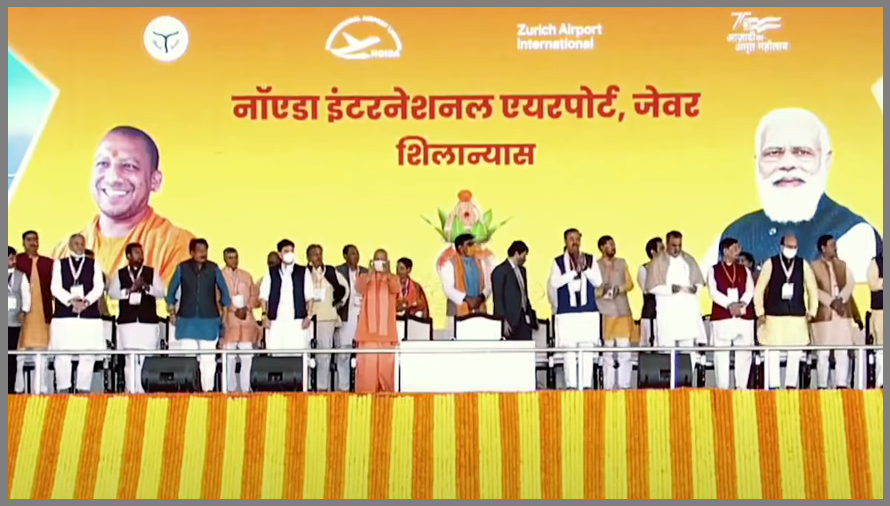N
Noida International Airport, also known as Jewar Airport, is a proposed airport project located in Jewar, Uttar Pradesh, India. It is planned to be built near the National Capital Region (NCR) of Delhi and is expected to serve as a secondary airport for the region, complementing the existing Indira Gandhi International Airport (IGI Airport) in Delhi.
Location: The airport is planned to be built at Jewar, which is located in the Gautam Buddha Nagar district of Uttar Pradesh, India. It is approximately 80 km from the main city of Delhi.
Purpose: The primary purpose of Noida International Airport is to ease air traffic congestion at Delhi’s Indira Gandhi International Airport and provide better connectivity to the National Capital Region.
Development: The project has been in the planning and development stages for several years. Once completed it is expected to be one of the largest airports in India.
Investment: Airport projects involve significant investment from both the government and the private sector. It is seen as an important infrastructure project for the economic development of the region.
Benefits: The airport is expected to boost economic development in the surrounding areas, create job opportunities and improve regional connectivity, benefiting both passengers and businesses.
Timeline: Construction timelines and completion dates are subject to changes and delays due to various reasons such as land acquisition issues, environmental concerns and bureaucratic processes. However, efforts are on to expedite the project.
Connectivity: The airport is expected to be well connected to major cities and towns of the National Capital Region through road and rail networks.
The Noida International Airport project holds significant promise for enhancing air travel infrastructure in the National Capital Region and promoting economic development in the surrounding areas.

Jewar Airport Master Plan
Terminal Design: including layout and design of the terminal, cargo terminal and other ancillary buildings such as parking, hotels and retail. The terminal building will be used for passenger traffic, baggage handling, security checkpoints and passenger areas.
Runway Configuration: Strategic planning based on weather needs, wind patterns and environmental considerations. Taxiways, aprons and aircraft parking areas are also included in this scope.
Airside Infrastructure: This involves the planning and construction of airside infrastructure such as taxiways, aprons, aircraft stands and navigation equipment to ensure the safe and efficient take-off and landing of aircraft.
Landside Access : Owner’s plan For land-side access to the airport, including roads, car parks, public transport terminals and entrances and exits of taxis, buses and private vehicles.
Environmental considerations: Environmental impact assessment is to evaluate the potential impact of the airport on the environment. The master plan includes measures to reduce environmental impacts such as noise reduction, wildlife management and air quality monitoring.
Utilities and Services: Plans include potable water, sewer, electricity and telecommunications to support airport operations and passenger vehicles.
Land Use Planning: The master plan defines the land use area at the airport, including parking, cargo handling, aircraft maintenance, commercial areas
Safety and security: Safety and security considerations, Aviation security and Strategic planning to ensure compliance with regulatory requirements and best practices for emergency preparedness.
Sustainability Initiatives: Initiatives will include sustainability initiatives such as the construction of power plants, renewable energy, water conservation measures and waste management.
Phasing and Implementation: A strategic plan usually includes a phased development approach that describes the process of creating projects based on demand and availability, nature, and time for various uses of airport infrastructure.

Jewar Toll Plaza
A toll road has been planned as part of the infrastructure surrounding the Jawahar Airport project.
Toll plazas are usually installed on toll roads or toll roads to charge vehicles to use the road infrastructure. It serves as a source of revenue to maintain and expand the road system.
Location: The exact location of the toll plaza will be determined based on factors such as traffic flow, proximity to the airport, and connectivity to major toll roads or toll roads leading to and from the airport.
Design: The design of toll plazas typically includes toll booths, electronic toll collection systems (ETC), administrative buildings, and toll collection infrastructure.
Operational data: The operational data of the toll plaza will include determining toll rates, determining the type of toll vehicle, determining payment methods (cash, electronic payment, etc.) and toll collection procedures.
Impact Assessment: Before construction, an impact assessment can be conducted to assess the potential environmental, social and economic impact of the toll plaza on the surrounding area and community.
Integration with the road network: The toll plaza should be seamlessly integrated with the existing road network to ensure smooth movement of travelers and minimal disruption to travelers.
Regulatory compliance: the construction and operation of toll plazas must comply with relevant regulations and standards set by transport authorities and regulatory authorities.
It should be remembered that the construction of infrastructure projects such as toll plazas can involve various stakeholders such as government agencies, transportation agencies, private developers and local communities. Therefore, public consultation and stakeholder engagement can also be part of this process

Completion date of Jewar Airport
The completion date of Jewar Airport (Noida International Airport) located in Uttar Pradesh, India may not be announced.
Initially, Jewar airport needs to be completed in phases; In the first phase, it is aimed to be operational within a few years after the start of construction. However, delays in land acquisition, environmental clearance and other administrative procedures affected the project schedule.
Due to the scale of the project and the complexity of airport construction, including infrastructure, management approval and coordination of various stakeholders, the completion date will be difficult to estimate.
The traffic control building (ATC) was completed a month ago.
Noida International Airport in Jewar is nearing completion and test flights are expected to begin in March-April.
While the airport terminal construction is about to be completed, the construction of the runway and air traffic control (ATC) building was completed a month ago.
According to Yamuna Expressway Industrial Development Authority (YEIDA), around 7,800 people are working day and night to complete the work in the shortest possible time.
The internal construction of the terminal will start soon and is expected to be completed within four months.
It has been reported that the Airport Authority has started to install traffic lights and signs on the runway. Additionally, equipment and machines were placed in the ATC building.
For connectivity, there will be a new highway of approximately 32 km length at Noida International Airport. According to reports, the express will travel from Delhi’s Kalindi Kunj to Agra Express via Noida Sector-150.
It is connected to Mumbai-Vadodara Expressway via Delhi circle. The National Highways Authority of India Limited (NHAI) will build the expressway.

Yamuna Expressway to Jewar Airport Distance
The distance between the expressway in Uttar Pradesh, India and the proposed Jewar Airport (Noida International Airport) may vary depending on the specific entry point.
Greater Noida: If you are starting from Greater Noida, a major city along the Yamuna Expressway, the distance to Jewar Airport site will be around 40 to 50 km, depending on the exact location in Greater Noida.
Agra: Agra is another major city connected by the Yamuna Expressway. The distance between Agra and Jewar airport site will be around 150 to 160 km.
Noida: For those traveling from Noida, which is relatively closer to the Jewar Airport site compared to Greater Noida and Agra, the distance would be around 70 to 80 kilometers.
Delhi: From certain parts of Delhi, such as areas near the starting point of the Yamuna Expressway, the distance to the Jewar Airport site could be approximately 100 kilometers or more.
It is important to note that this distance is approximate and may vary depending on each city’s unique location and future development or infrastructure changes. Roads and traffic will also affect travel time.
For precise and up-to-date information on the distance and travel routes to the Jewar Airport, it’s recommended to refer to official maps, navigation apps, or transportation authorities.